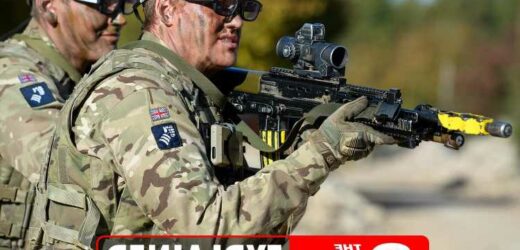INSIDERS have warned that Russia is on the brink of a carrying out a false flag operation to create a pretext to invade Ukraine.
But what is a false flag operation and where else has it been used in history? Here’s all you need to know.
What is a false flag operation?
The term ‘false flag’ refers to a covert operation usually orchestrated by a government.
The operations are designed to appear as they were carried out by another group or country and are generally used to set a pre-context for war.
The term also refers to activities that are carried out by individuals or government organisations to undermine political opponents.
In civil cases and legal terms, these scenarios are more commonly referenced as “stich ups” and “setups.”
Most read in News
VLAD DEFIANT 'Putin doesn't give s*** about sanctions' & adds helicopters to Ukraine front
Top Olympian 'sorry' after fury at video of him whipping a horse TEN times
Ghislaine introduced as Andrew’s ex-lover on Buckingham Palace tour
You can buy a house for £1 on this newbuild estate- & the residents love it
Who has used a false flag operation?
False flags have been used repeatedly throughout history to create the necessary cover to justify a war.
Russo-Swedish War
Swedish forces were one of the first to utilise tactic back in 1788 as they staged an attack on Puumala – a Swedish outpost on the old Russo-Swedish border.
Using military uniforms, which were produced at a local tailor, the attackers posed as Russian soldiers – before framing the incident as an act of war.
The Swedish National Assembly – who previously refuted the prospect of conflict, believed it provided enough evidence to launch an offensive as a form of self-defence.
With the backing of King Gustav III, the pre-planned act provided the cover to launch the Russo-Swedish war which lasted for two years.
Second Sino-Japanese War
In September 1931, Japanese officers fabricated a pretext for invading Manchuria by blowing up a section of railway.
Though the explosion was too weak to disrupt operations on the rail line, the Japanese used this Mukden incident to seize Manchuria and create their own “independent state.”
Gleiwitz incident
Hitler used false flag tactics with the so-called Gleiwitz incident, during which his brutal SS staged an attack on a radio station in Germany.
The attackers posed as Polish nationals, and it brought support for the invasion that followed a month later and sparked World War 2.
It was used to dress up the invasion as an act of self defence against Polish "atrocities" against Germans.
"Its credibility doesn’t matter. The victor will not be asked whether he told the truth," Hitler said just before the invasion of Poland.
Winter War
On 26 November 1939, the Soviet army shelled Mainila, a Russian village near the Finnish border.
Soviet authorities blamed Finland for the attack and used the incident as a pretext to invade Finland – starting the Winter War four days earlier.
Source: Read Full Article








